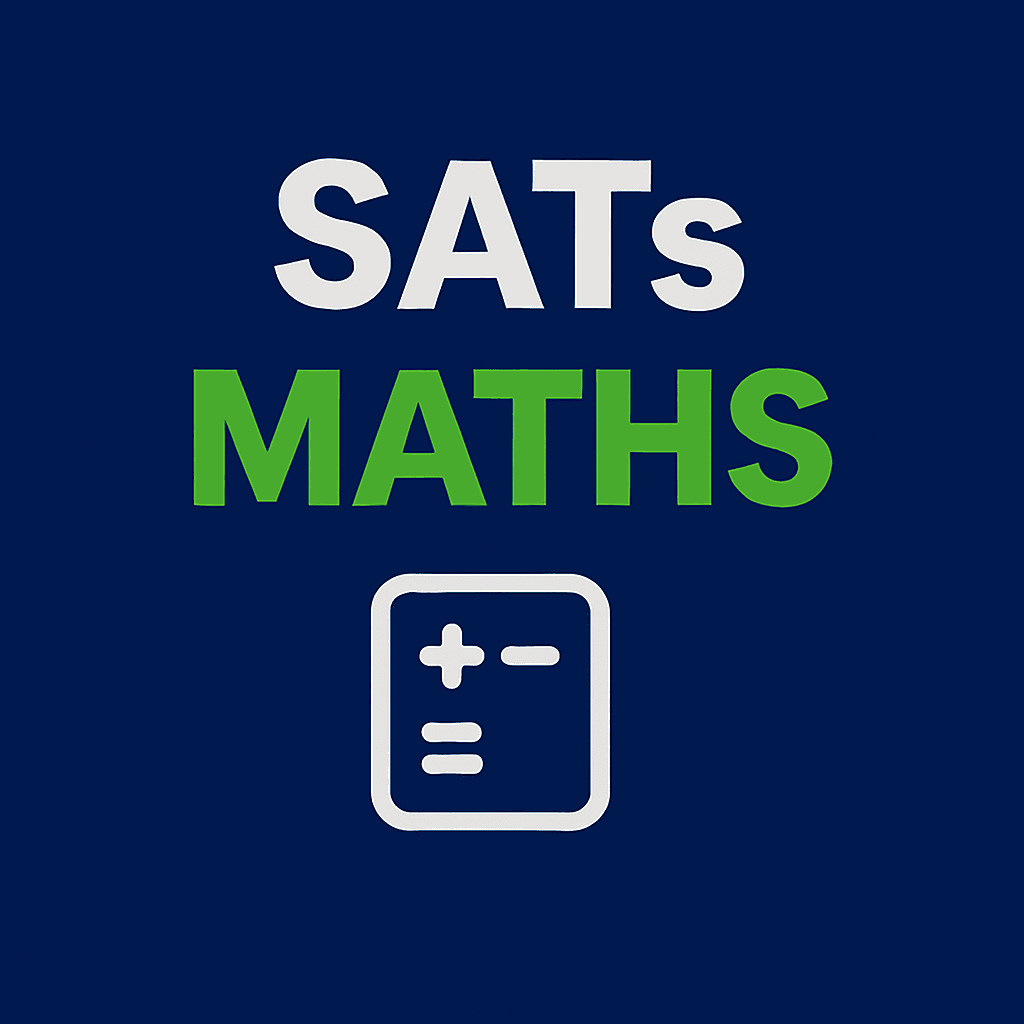Table of Contents
ToggleMastering Percentages for SAT Math Success
Introduction
Percentage problems are a common feature of the SAT Math section. They test your ability to work with ratios, proportions, and changes in quantities. Whether it’s calculating a discount, tax, or percentage increase, knowing these problems inside and out can help you gain easy points.
This guide will cover:
- Key formulas for percentage calculations.
- Solving step-by-step percentage problems.
- Common SAT percentage question types.
Key Percentage Formulas
Percent means “per hundred.” The basic formula is:
![Rendered by QuickLaTeX.com \[ \text{Percentage} = \left( \frac{\text{Part}}{\text{Whole}} \right) \times 100 \]](data:image/svg+xml;base64,PHN2ZyB4bWxucz0iaHR0cDovL3d3dy53My5vcmcvMjAwMC9zdmciIHdpZHRoPSIyMzYiIGhlaWdodD0iNDMiIHZpZXdCb3g9IjAgMCAyMzYgNDMiPjxyZWN0IHdpZHRoPSIxMDAlIiBoZWlnaHQ9IjEwMCUiIHN0eWxlPSJmaWxsOiNjZmQ0ZGI7ZmlsbC1vcGFjaXR5OiAwLjE7Ii8+PC9zdmc+)
Percentage Increase/Decrease
![Rendered by QuickLaTeX.com \[ \text{Change} = \frac{\text{New Value} - \text{Original Value}}{\text{Original Value}} \times 100 \]](data:image/svg+xml;base64,PHN2ZyB4bWxucz0iaHR0cDovL3d3dy53My5vcmcvMjAwMC9zdmciIHdpZHRoPSIzNTIiIGhlaWdodD0iNDAiIHZpZXdCb3g9IjAgMCAzNTIgNDAiPjxyZWN0IHdpZHRoPSIxMDAlIiBoZWlnaHQ9IjEwMCUiIHN0eWxlPSJmaWxsOiNjZmQ0ZGI7ZmlsbC1vcGFjaXR5OiAwLjE7Ii8+PC9zdmc+)
Finding the Whole Given the Part
![Rendered by QuickLaTeX.com \[ \text{Whole} = \frac{\text{Part}}{\text{Percentage}} \times 100 \]](data:image/svg+xml;base64,PHN2ZyB4bWxucz0iaHR0cDovL3d3dy53My5vcmcvMjAwMC9zdmciIHdpZHRoPSIyMTAiIGhlaWdodD0iNDEiIHZpZXdCb3g9IjAgMCAyMTAgNDEiPjxyZWN0IHdpZHRoPSIxMDAlIiBoZWlnaHQ9IjEwMCUiIHN0eWxlPSJmaWxsOiNjZmQ0ZGI7ZmlsbC1vcGFjaXR5OiAwLjE7Ii8+PC9zdmc+)
Solving Percentage Problems Step-by-Step
Example 1: Basic Percentage Calculation
Question: What is 20% of 150?
Solution:
![Rendered by QuickLaTeX.com \[ \text{Percentage} = \left( \frac{20}{100} \right) \times 150 = 30 \]](data:image/svg+xml;base64,PHN2ZyB4bWxucz0iaHR0cDovL3d3dy53My5vcmcvMjAwMC9zdmciIHdpZHRoPSIyNTQiIGhlaWdodD0iNDMiIHZpZXdCb3g9IjAgMCAyNTQgNDMiPjxyZWN0IHdpZHRoPSIxMDAlIiBoZWlnaHQ9IjEwMCUiIHN0eWxlPSJmaWxsOiNjZmQ0ZGI7ZmlsbC1vcGFjaXR5OiAwLjE7Ii8+PC9zdmc+)
Example 2: Percentage Increase
Question: A jacket costs $80 and the price increases by 25%. What is the new price?
Solution:
- Find the increase:
![Rendered by QuickLaTeX.com \[ \text{Increase} = \left( \frac{25}{100} \right) \times 80 = 20 \]](data:image/svg+xml;base64,PHN2ZyB4bWxucz0iaHR0cDovL3d3dy53My5vcmcvMjAwMC9zdmciIHdpZHRoPSIyMjQiIGhlaWdodD0iNDMiIHZpZXdCb3g9IjAgMCAyMjQgNDMiPjxyZWN0IHdpZHRoPSIxMDAlIiBoZWlnaHQ9IjEwMCUiIHN0eWxlPSJmaWxsOiNjZmQ0ZGI7ZmlsbC1vcGFjaXR5OiAwLjE7Ii8+PC9zdmc+)
- Add to original price:
![Rendered by QuickLaTeX.com \[ \text{New Price} = 80 + 20 = 100 \]](data:image/svg+xml;base64,PHN2ZyB4bWxucz0iaHR0cDovL3d3dy53My5vcmcvMjAwMC9zdmciIHdpZHRoPSIyMTEiIGhlaWdodD0iMTQiIHZpZXdCb3g9IjAgMCAyMTEgMTQiPjxyZWN0IHdpZHRoPSIxMDAlIiBoZWlnaHQ9IjEwMCUiIHN0eWxlPSJmaWxsOiNjZmQ0ZGI7ZmlsbC1vcGFjaXR5OiAwLjE7Ii8+PC9zdmc+)
Example 3: Percentage Decrease
Question: A phone is discounted by 30% from $200. What is the sale price?
Solution:
- Find the discount:
![Rendered by QuickLaTeX.com \[ \text{Discount} = \left( \frac{30}{100} \right) \times 200 = 60 \]](data:image/svg+xml;base64,PHN2ZyB4bWxucz0iaHR0cDovL3d3dy53My5vcmcvMjAwMC9zdmciIHdpZHRoPSIyMzgiIGhlaWdodD0iNDMiIHZpZXdCb3g9IjAgMCAyMzggNDMiPjxyZWN0IHdpZHRoPSIxMDAlIiBoZWlnaHQ9IjEwMCUiIHN0eWxlPSJmaWxsOiNjZmQ0ZGI7ZmlsbC1vcGFjaXR5OiAwLjE7Ii8+PC9zdmc+)
- Subtract from original price:
![Rendered by QuickLaTeX.com \[ \text{Sale Price} = 200 - 60 = 140 \]](data:image/svg+xml;base64,PHN2ZyB4bWxucz0iaHR0cDovL3d3dy53My5vcmcvMjAwMC9zdmciIHdpZHRoPSIyMTgiIGhlaWdodD0iMTMiIHZpZXdCb3g9IjAgMCAyMTggMTMiPjxyZWN0IHdpZHRoPSIxMDAlIiBoZWlnaHQ9IjEwMCUiIHN0eWxlPSJmaWxsOiNjZmQ0ZGI7ZmlsbC1vcGFjaXR5OiAwLjE7Ii8+PC9zdmc+)
SAT Percentage Problem Types
Finding the Percentage of a Number
- Use the basic percentage formula:
 .
.
Percentage Increase and Decrease
- Always compare the change relative to the original value.
Reverse Percentage Problems
- Find the original price or value before a percentage increase or decrease.
- Use the basic percentage formula:
Practice Question
Question: The price of a shirt increased from $50 to $65. What is the percentage increase?
Solution:
- Find the change:
![Rendered by QuickLaTeX.com \[ \text{Change} = 65 - 50 = 15 \]](data:image/svg+xml;base64,PHN2ZyB4bWxucz0iaHR0cDovL3d3dy53My5vcmcvMjAwMC9zdmciIHdpZHRoPSIxNzkiIGhlaWdodD0iMTciIHZpZXdCb3g9IjAgMCAxNzkgMTciPjxyZWN0IHdpZHRoPSIxMDAlIiBoZWlnaHQ9IjEwMCUiIHN0eWxlPSJmaWxsOiNjZmQ0ZGI7ZmlsbC1vcGFjaXR5OiAwLjE7Ii8+PC9zdmc+)
- Divide by the original value:
![Rendered by QuickLaTeX.com \[ \text{Percentage Increase} = \frac{15}{50} \times 100 = 30\% \]](data:image/svg+xml;base64,PHN2ZyB4bWxucz0iaHR0cDovL3d3dy53My5vcmcvMjAwMC9zdmciIHdpZHRoPSIzMDEiIGhlaWdodD0iMzciIHZpZXdCb3g9IjAgMCAzMDEgMzciPjxyZWN0IHdpZHRoPSIxMDAlIiBoZWlnaHQ9IjEwMCUiIHN0eWxlPSJmaWxsOiNjZmQ0ZGI7ZmlsbC1vcGFjaXR5OiAwLjE7Ii8+PC9zdmc+)
Answer: The percentage increase is 30%.
Common Mistakes to Avoid
- Confusing Increase/Decrease: Always compare to the original value.
- Skipping Steps: Write out each step to avoid calculation errors.
- Misreading “of” vs. “off”: “20% of 100” means multiplication; “20% off 100” involves subtraction.
Summary
Mastering percentages for the SAT requires understanding key formulas and problem types. With practice, you’ll solve these questions quickly and accurately to boost your score.
📅 Book Your Free SAT Math Consultation Today!
Skinat Tuition | Excellence in SAT, GCSE, and A-Level Tutoring Worldwide.


